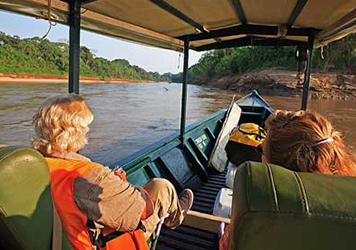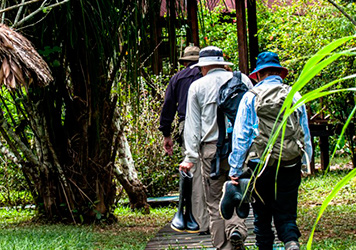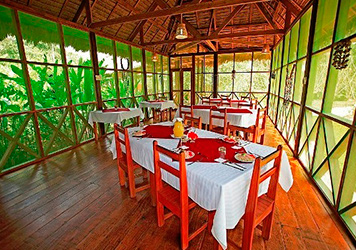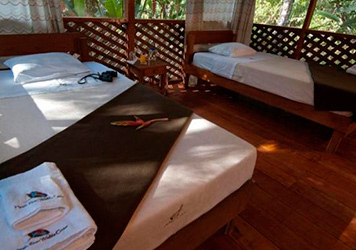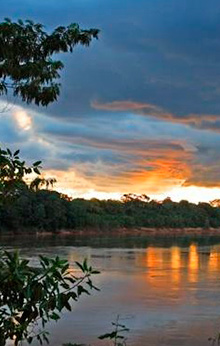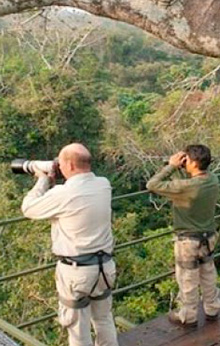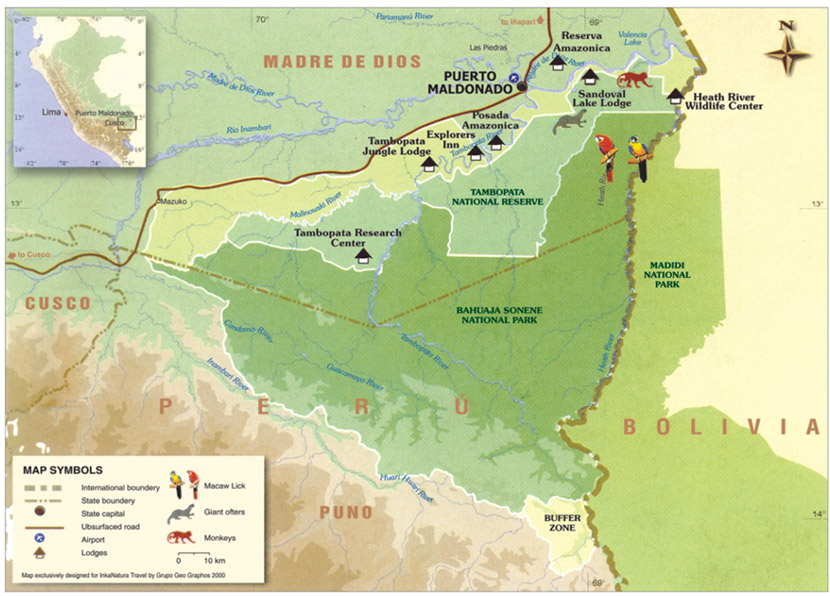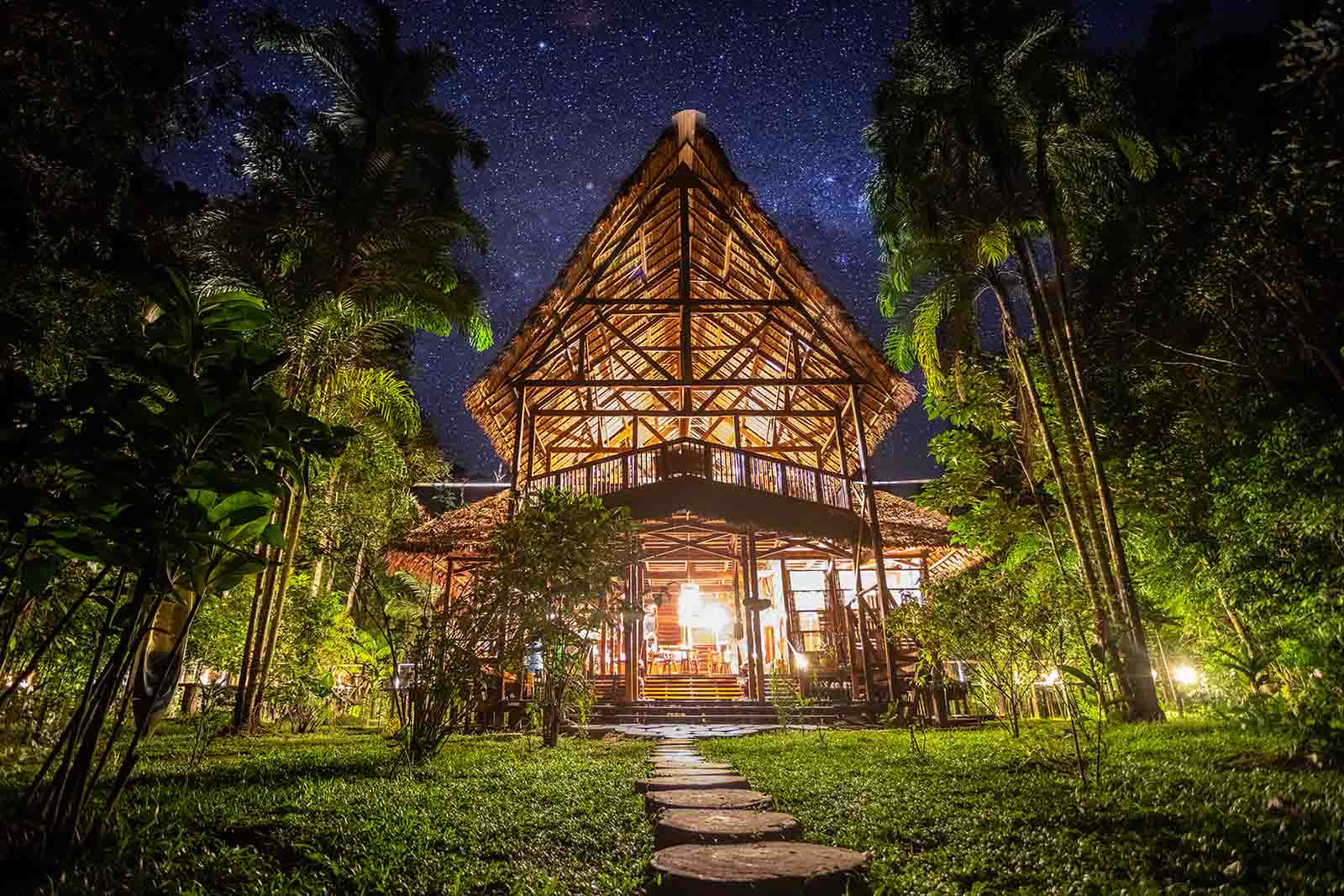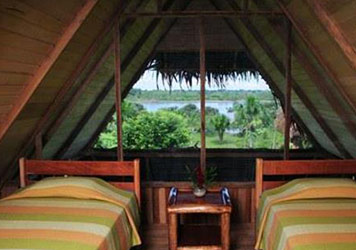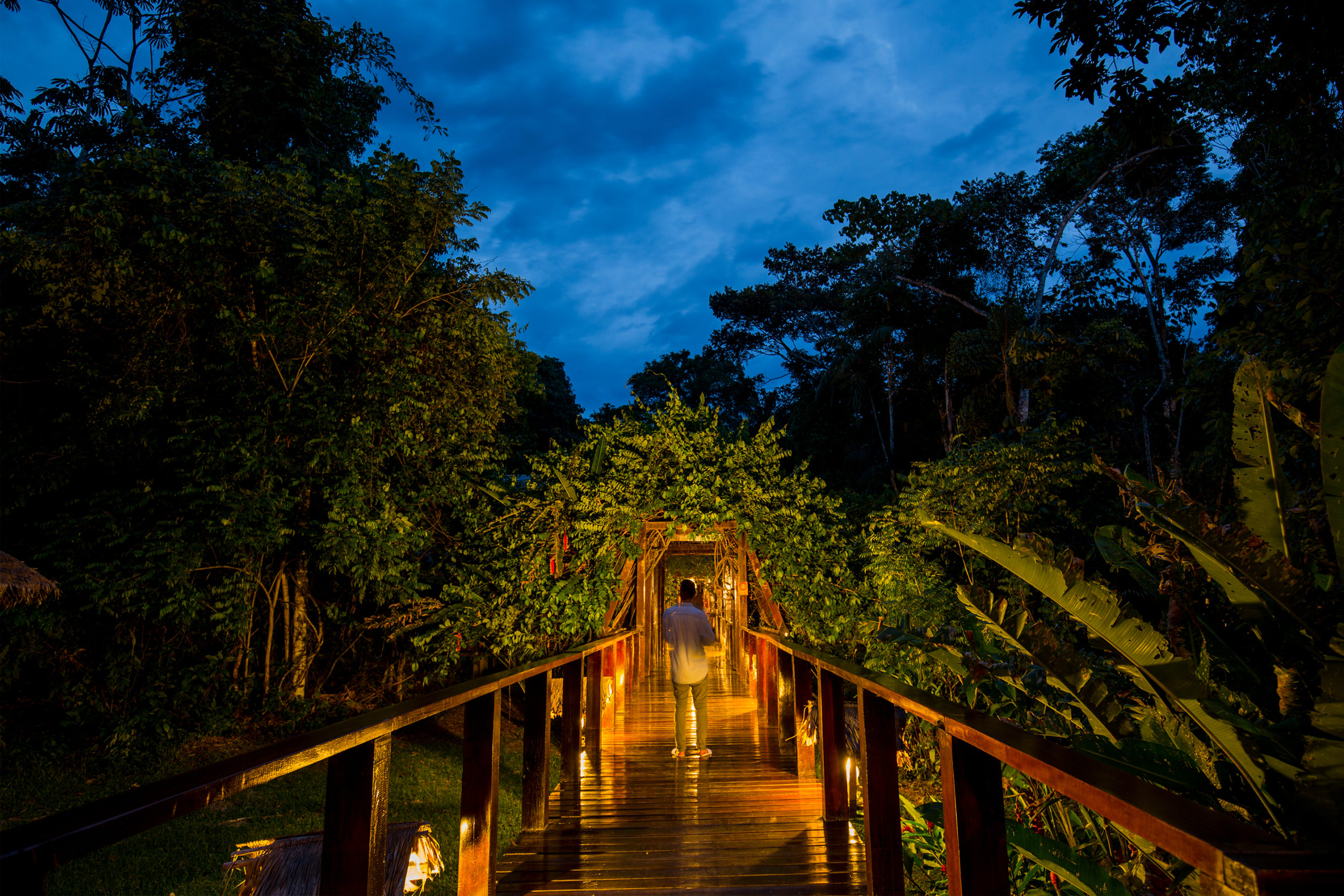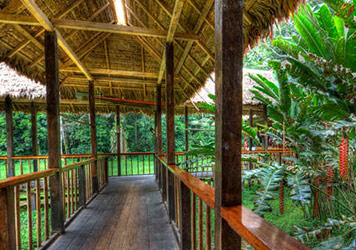Today we make an early start to visit the lodge’s most spectacular feature: the Heath River parrot and macaw lick. Here these colorful birds gather to eat a type of clay from the cliff-like river banks that neutralizes certain toxins in their diet. They congregate early each morning, sometimes by the hundreds, jostling and squabbling over the best eating spots on the clay lick. This noisy and unforgettable show can go on for two or three hours, and may begin with up to five species of parrot and two varieties of parakeet, followed by Chestnut-fronted Macaws and their larger, more boisterous cousins, the Red-and-green Macaws. This extraordinary wildlife display occurs at only a handful of sites in the Upper Amazon Basin, and nowhere else on the planet.
Our floating hide platform provides comfort and complete concealment, so that we can eat a full breakfast here during pauses in the bankside spectacle.
On our return we can land partway downriver and walk back along a section of the lodge’s extensive network of forest trails. We encounter numerous gigantic Brazil-nut, kapok and fig trees, along with the scary strangler fig, whose life strategy is as sinister as its name suggests. Our guide will point out and explain the medicinal and commercial uses of dozens of plants and trees, while we keep our eyes and ears open for birds, or one of the eight species of monkeys found in this region. We might come upon a small herd of White-lipped or Collared peccary – two kinds of wild pig that are quite common in this area. For purposes of territorial marking they deploy a “stink gland” so potent that they are often smelled long before they are seen.
After lunch we typically hike along a major trail to a point where the forest abruptly gives way to the spacious plains of the Pampas del Heath, part of Bolivia’s Madidi National Park. This unique environment — the result of very poor soils, plus an extreme seasonal cycle of dryness and flooding — is the largest remaining undisturbed tropical savannah in the Amazon, and is home to rare endemic birds and mammals, such as the Swallow-tailed Hummingbird and the highly endangered Maned Wolf. Shortly beyond the edge of the forest we can climb a raised platform that allows us a grand view of this vast expanse of grassland and shrub, studded with palm trees.
We can continue another hour or so to a swampy area thick with Mauritia flexuosa palm trees, whose oil-rich palm nuts and hollowed-out dead palms provide vitally important food and shelter for nesting pairs of Red-bellied and increasingly rare Blue-and-yellow macaws. We aim to arrive toward dusk, when the macaws are returning from their day’s foraging to congregate in this very special breeding site.
We return to the lodge by night, using our flashlights, and perhaps pausing here and there in total darkness, to listen to the ever-changing orchestra of animals, frogs and insects, and to experience the magic of the night-time rainforest. We may come upon such bizarre nocturnal creatures as camouflaged frogs disguised as dead leaves, toads the size of rabbits, hairy tarantulas peering out of their dirt holes, night monkeys lurking among the tree branches, and a teemingly unpredictable array of other nightlife.
After dinner some guests may choose to visit one of our mammal lick hides, in hopes of seeing a Lowland Tapir, the rainforest’s largest mammal. Hardy adventurers can choose to camp here with their guide, in order to experience a full night in the heart of the rainforest and increase their chances of a major wildlife sighting.

